
- •University of
- •Plan
- •University of Oxford - university located in Oxford, Oxfordshire, UK.
- •History
- •Around the same time, private benefactors colleges were created to live as an
- •Admission to
- •Education is not free: the cost of living per year - about
- •Structure of the
- •Oxford teaching staff is huge - almost 4000 people, 70 of them -
- •Department:
- ••Anthropology;
- •Oxford - not only the university but also the largest research center in
- •Interesting Facts
- •Notable alumni
- •Tony Blair - British Prime Minister from 1997 to 2007
- •Sources
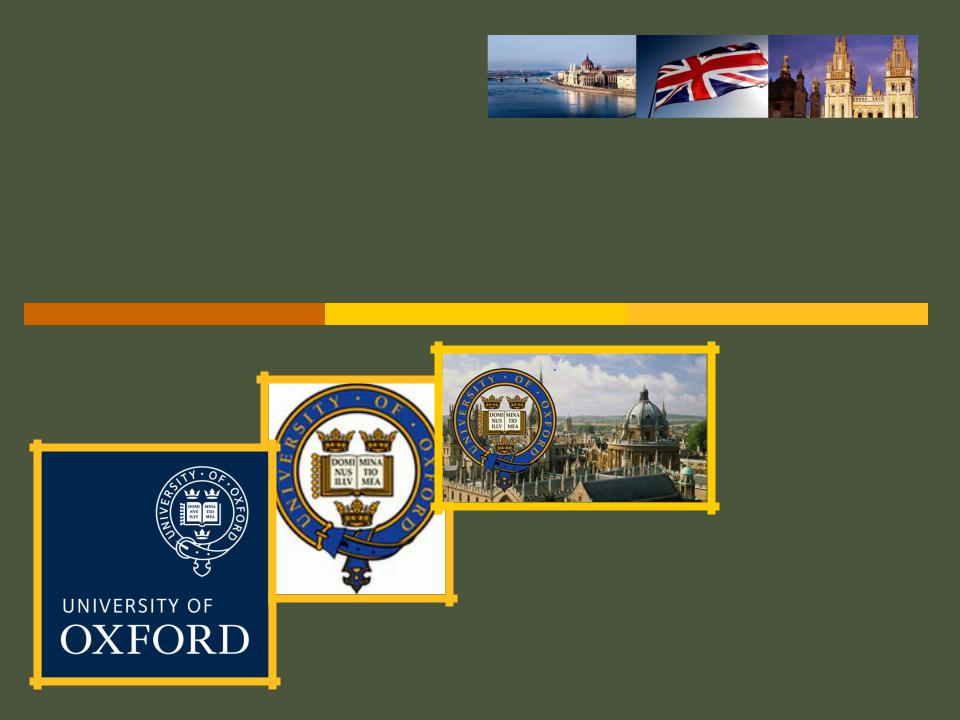
University of
Oxford
The presentation, 291 student groups
Kherson Polytechnic College
Simak Irina

Plan
History
Admission to the University
Structure of the University
Interesting Facts
Notable alumni
Sources
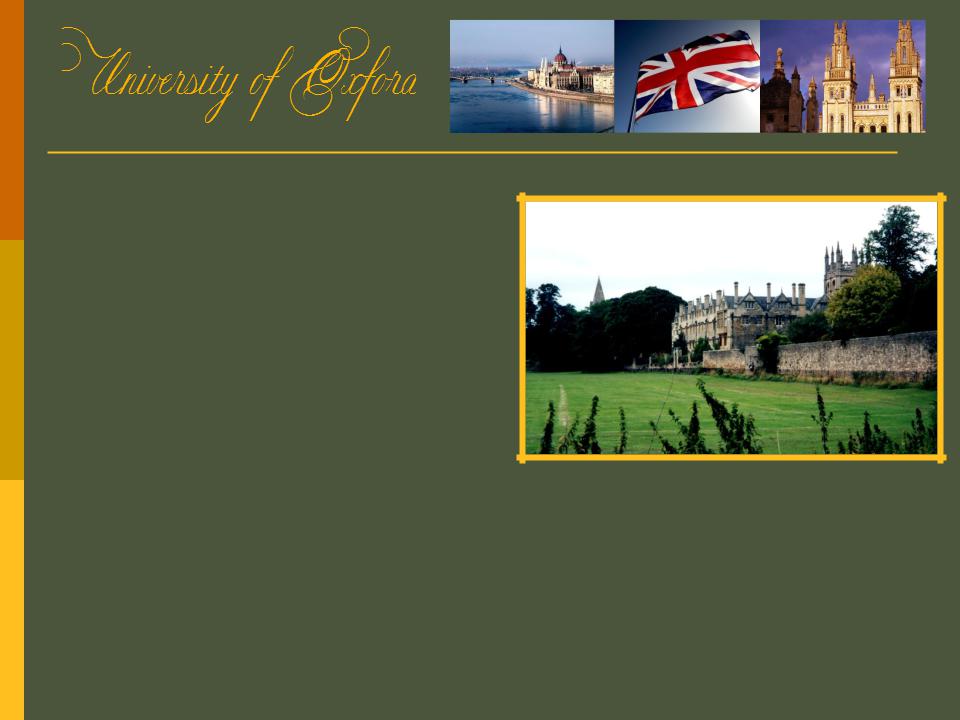
University of Oxford - university located in Oxford, Oxfordshire, UK.
Ranked second in the list of the oldest universities in Europe (after Bologna), the oldest English- speaking university in the world, as well as the first university in the UK. Although the exact date of the university is not known, there is evidence that taught there in the 11th century. Included in the group of "ancient universities" of Great Britain and Ireland, as well as an elite group of "Russell" the top 20 universities in the UK.
The University consists of 38 faculties and colleges, as well as the so- called six dormitories - private schools that do not have the status of college and belonging, as a rule, religious orders. All exams, like most of lectures and laboratory exercises, organized centrally, while individual colleges run courses for students and seminars.
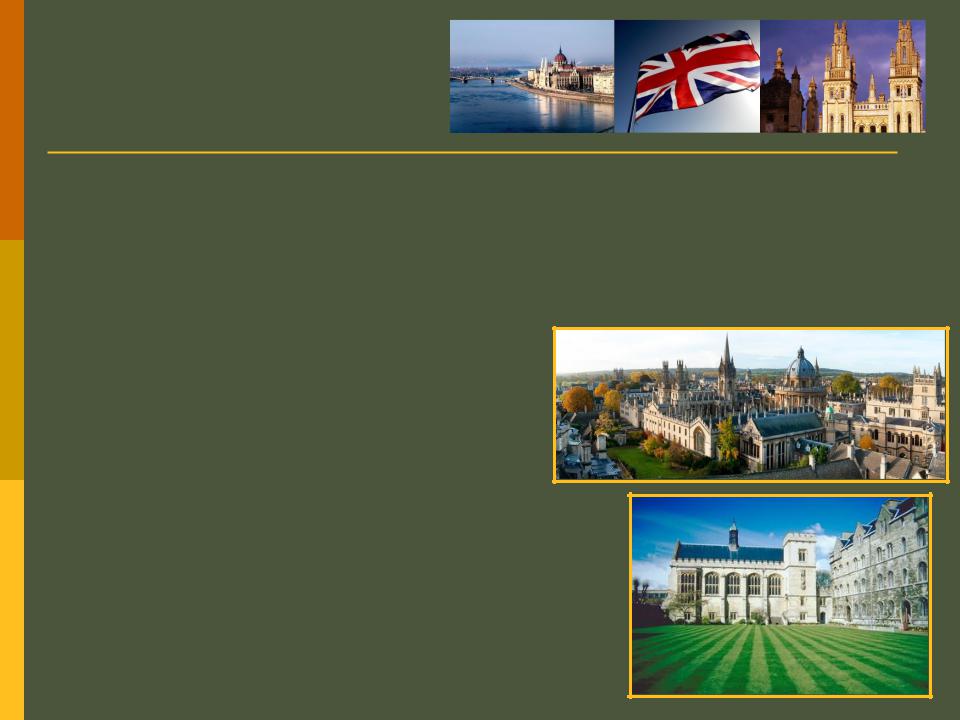
History
The exact date of the founding of the University of Oxford is not known. Training was conducted in Oxford since 1096. The expulsion of foreigners from the
University of Paris in 1167 (as a result of the reforms of Henry II Plantagenet, he banned English students to study at the Sorbonne), the British forced many students to leave France and settle in Oxford.
Historian Gerard of Wales lectured to students as early as 1188, and the first mention of foreign students was in 1190, the first foreign student to documents was «Emo of Friesland». The head of the University was (and is to this day) the chancellor. Non- English students were divided into northern British (Scots) and southern (Irish and Welsh). In later centuries, geographical origin continued to influence many students when the friendship between the colleges and halls of residence was custom. Members of many religious orders: the Dominicans, Franciscans, Carmelites, Augustinians, settled in Oxford in the mid-13th century. They influenced and supported the student's home.

Around the same time, private benefactors colleges were created to live as an
independent discipling community. Among the first were William Durham, who in 1249 founded the University College (English University College), and John de Balliol I, father of the future King of Scotland, gave its name to Balliol College (English Balliol College). English Lord Chancellor and founder (born Merton College), Walter de Merton developed rules for colleges. Merton College has become a model for other colleges of Oxford and Cambridge. After that, many students left the life in hostels and religious houses and moved to college.
If over time through Oxford almost required to attend the members of high society, in the Middle Ages, before that it was still far away. Students were only clergy, they rented a room from local residents and were often poor.
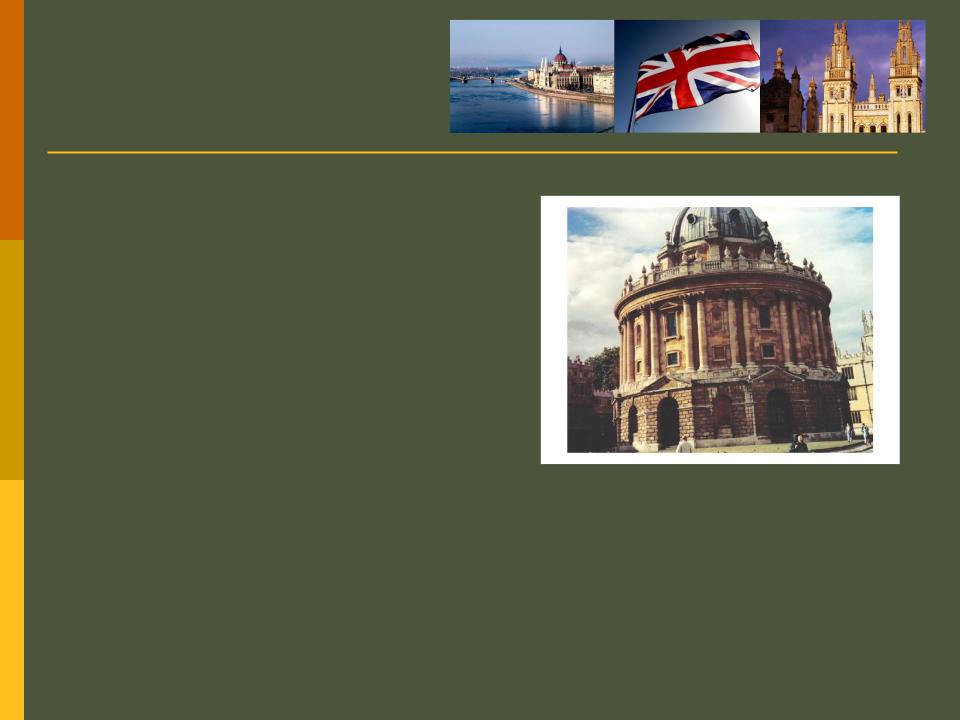
Admission to
University
In October and November, before the planned start of the year of training, candidates are applying to colleges. A special
commission is considering assessment (only excellent, A- level), letters of recommendation, conducts interviews. In some cases, the prospective student may be asked to show their written work, conduct their own written tests.
(School examinations in the UK and are not held to standardize the schools, and the central examination boards - examination boards, accredited by the state.) Because of university places available before most students finish school exams, students are generally accepted on the condition that their estimates for the new academic year will be not less than a specified score (conditional offer). It is also necessary to know English better than the English (Certified IELTS - 6.5, TOEFL - 230).
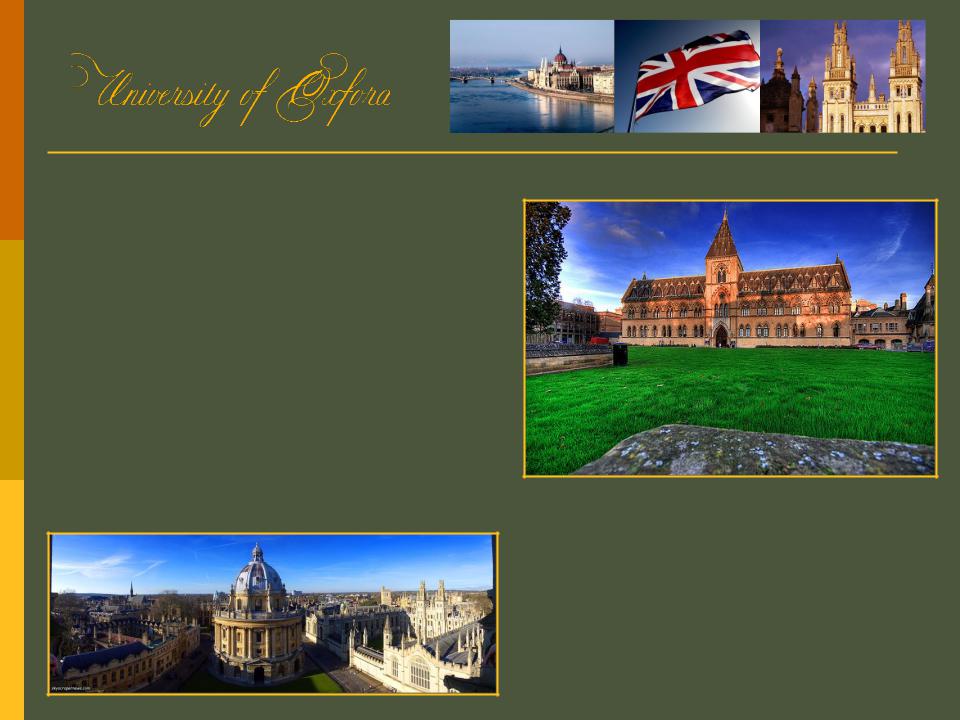
Education is not free: the cost of living per year - about
8,000 pounds, fees depend on the chosen specialty - Art -
6300 pounds, science - 8400 pounds, medicine - 15400 pounds. For admission to graduate and post-graduate candidates submit applications to the appropriate department.
Do not apply the statements in the same year in both Oxford and Cambridge universities.
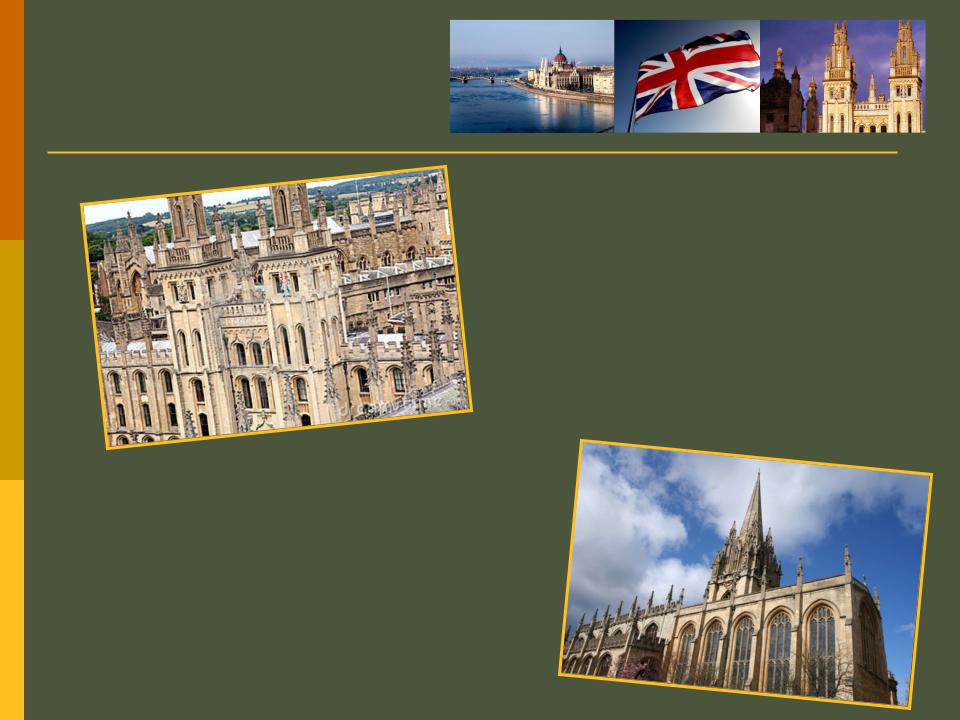
Structure of the
University
The university consists of 38 colleges and six dormitories - boarding schools belonging to
religious orders without college status. Exams, the majority of lectures and laboratory classes organized centrally and colleges run individual sessions with students and seminars.
Now Oxford has more than 20,000 students , about a quarter of them - foreign. Their number increases dramatically in the summer, when opened summer language school. Rector of Oxford - Sir Chris Patten. Women in Oxford began to take only 1920., But in the 70's was abolished segregation.

Oxford teaching staff is huge - almost 4000 people, 70 of them -
members of the Royal Society,
100 - Member of the British
Academy (English). Oxford uses a unique system of education tutoring - on each student establishes personal care specialist in the chosen specialty.
The main areas of training students - humanities, mathematics, physics, social sciences, medicine, life sciences and the environment.
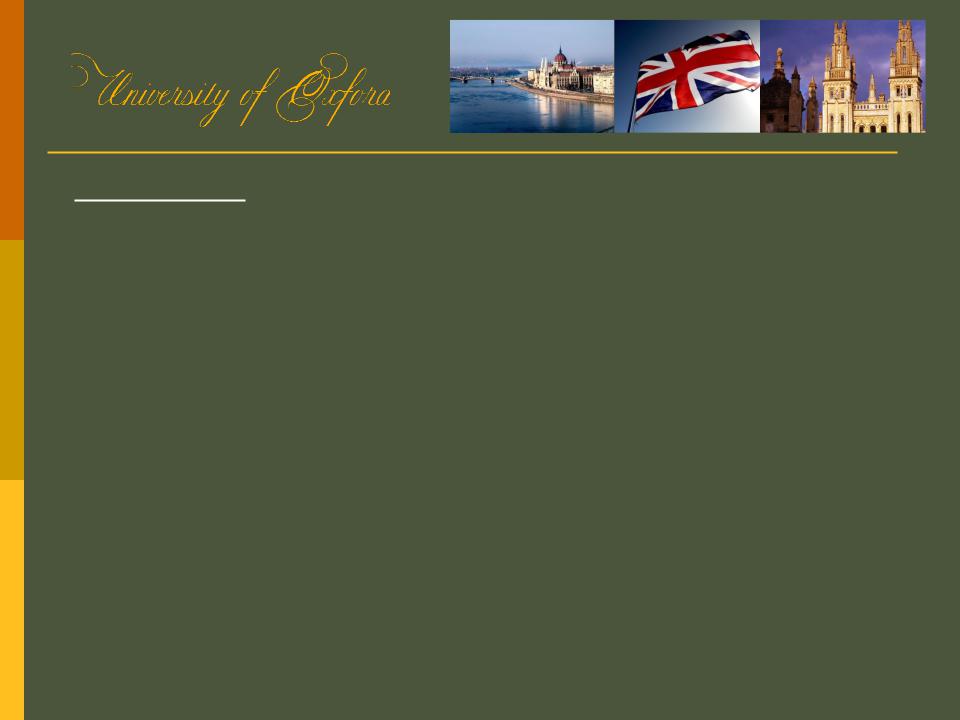
Department:
classical languages and literature;
ancient history;
philology, linguistics and phonetics;
painting and visual arts;
English language and literature;
medieval and modern languages;
modern history;
music;
East;
philosophy;
Theology;
China;
History of Art;
History of Medicine;
•Clinical Laboratory Science;
•Clinical Medicine;
•Clinical Neurology;
•Clinical Pharmacology;
•genetics;
•Molecular Medicine;
•obstetrics and gynecology;
•ophthalmology;
•pediatrics;
•psychiatry;
•health and first aid;
•surgery;
•Experimental Psychology;
